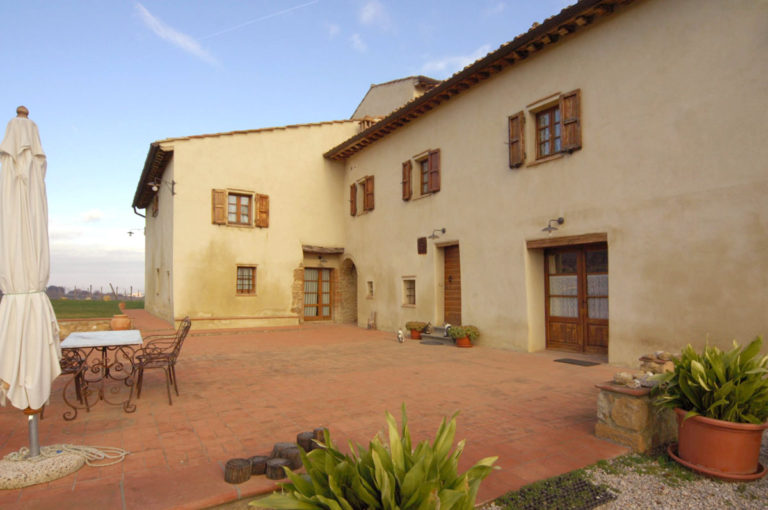
[ux_text text_color=”rgb(0,0,0)”]
With the warm Tyrrhenian Sea to the West and the Apennine Mountains in the North, Tuscany has a classic Mediterranean climate already well-suited for many grape varieties, but it’s the hilly landscape that makes the true difference. Most of Tuscany’s vineyards are on high-elevation hillsides which helps ensure that the grapes grown in the area have a better sugar-to-acid balance. Each region of Tuscany, however, boasts slightly different conditions suited to different grapes and wines.
For example, Brunello di Montalcino is far drier and warmer than Chianti, Tuscany’s largest wine region, and the wines they each produce are quite distinctive as a result. In San Gimignano, the wines are shaped by our chalk soils and hot summers while other regions such as Bolgheri and Marema benefit from the sea breeze.
With such diversity, Tuscany offers a variety of red and white wines that pair beautifully with its rich culinary traditions.
Keep reading to discover the unique offerings from each of Tuscany’s wine regions, and how best to pair them with classic Italian dishes …
[/ux_text]
[title style=”center” text=”Classic Tuscan Red Wines”]
[ux_image id=”128477″ image_size=”medium”]
Not only does Tuscany have some of the best food in Italy, but here are three Tuscan red wines that should be at the top of your tasting list:
[title style=”center” text=”Notable Tuscan White Wines”]
[ux_image id=”128480″]
[ux_text text_color=”rgb(0,0,0)”]
Though known mostly for its reds, here are some of Tuscany’s white wines not to be missed:
Vernaccia di San Gimignano
This wine dates back to at least the Middle Ages and in order to earn its name, must feature at least 90% Vernaccia grape. The wine itself tends to have a pale, straw-yellow hue with a crisp, citrusy taste. As it ages, it tends to turn more golden and develop an almost nutty flavor.
Super Tuscan (White Wine)
Often blending Vernaccia grapes with Chardonnay, a White Super Tuscan shows off how well Vernaccia mixes with others. Still a very energetic wine, the blends are a lovely way to taste the more experimental side of Tuscan white wines.
Vin Santo
No discussion on Tuscan wines would be complete without mentioning the favorite dessert wine of the region. “Vin Santo” translates to “holy wine” and though the stories of how this originated vary, there’s no doubt that the wine makes for the perfect dessert accompaniment. It’s usually made with Malvasia and Trebbiano grapes and can vary in sweetness depending on the exact blend, but the wine tends to have nutty, honey-style flavors to it.
[/ux_text]
[title style=”center” text=”Tips for Pairing Tuscan Wines and Italian Dishes”]
Beyond the general tips of pairing reds with meat dishes and whites with seafood and chicken, consider how strong the flavors of the meal are likely to be and build your wine pairing around it.
Richer, spicier food tends to balance better with Sangiovese wines such as a Chianti Classic which holds its own against bold flavors. Truffle-heavy meals also tend to match well with Chiantis. Lighter flavors such as vegetarian pastas or fresh seafood fare better with the crispness of a Vernaccia di San Gimignano.
For example, a Super Tuscan pairs wonderfully with a classic Bistecca alla Fiorentina, where the bold flavors of the wine enhance the richness of the steak.
[title style=”center” text=”Tuscan Wine and Food Pairing Examples”]
We’d argue that there are few Italian meals a Tuscan wine doesn’t pair well with but must admit some bias on that …
Chianti Colli Senesi and Tagliolini al Tartufo: Tuscany is famous for its truffles, but the unique flavor often makes people hesitant about wine pairings. This Chianti Colli Senesi is 90% Sangiovese and 10% Canaiolo Nero and has a beautifully smooth, fruit-forward flavor that balances perfectly with truffle pasta.
Vernaccia di San Gimignano and Vernaccia Rabbit: Vernaccia Rabbit is a traditional San Gimignano dish usually cooked in white wine. Drinking a Vernaccio wine such as our Visila della Marronaia with it brings the whole meal, and the story of this area, together.
Rosso Toscano with Wild Boar Ragu: A dish as lush as Wild Boar Ragu deserves something equally bold to go with it. For that, we offer our award-winning Intenso della Marronaia. The Sangiovese wine has notes of ripe, black fruit and baking spices which makes it a lovely match for the warmth of a ragu.
You can also explore how Rosso Toscano pairs with Florentine-style pork chops, or how a light Vin Santo complements a Tuscan almond biscotti dessert.
To explore more Tuscan wine offerings, click here. We’ve even listed each wine with its ideal food pairings so that your meals are always perfectly balanced.